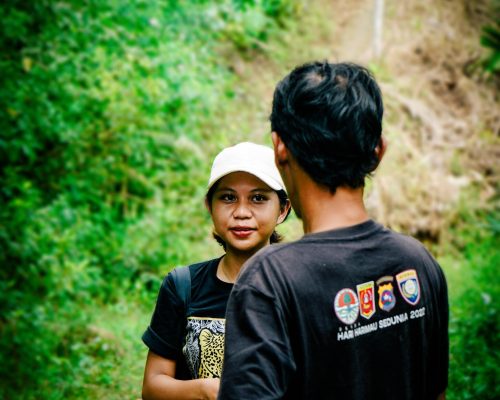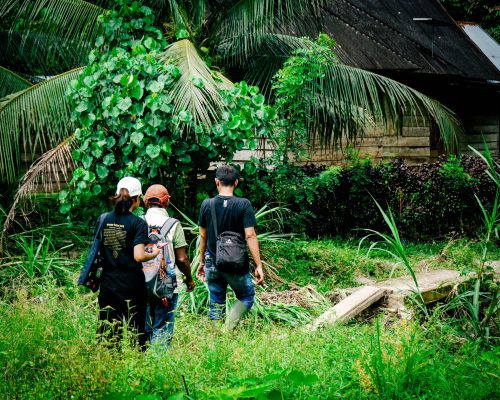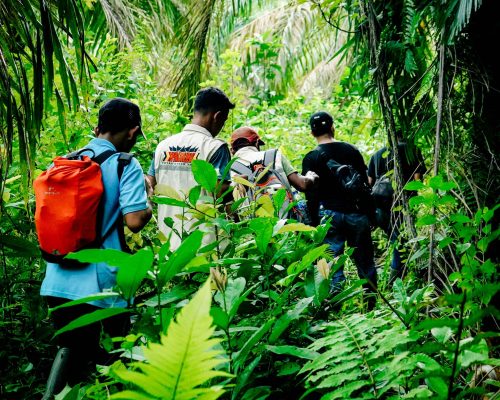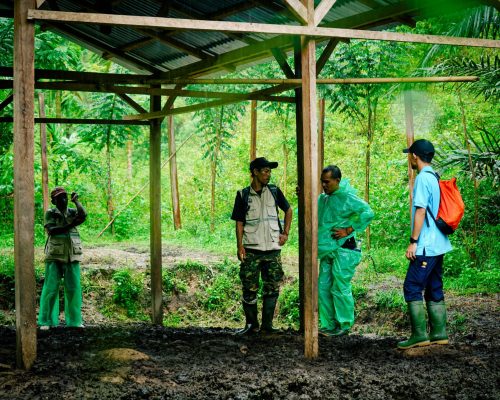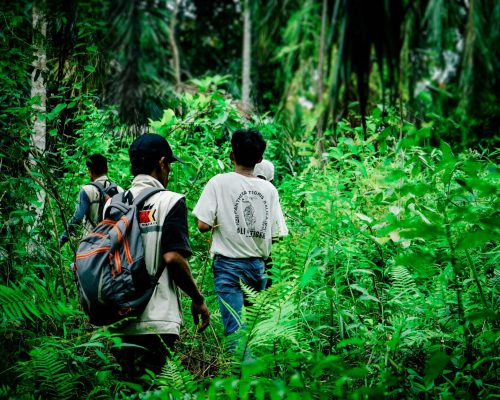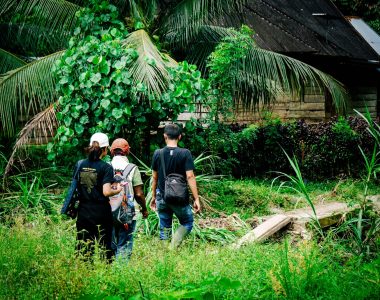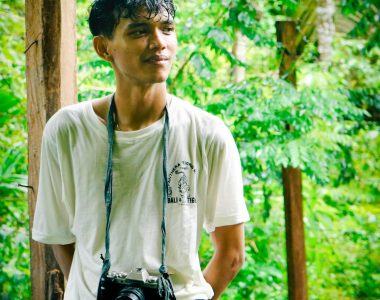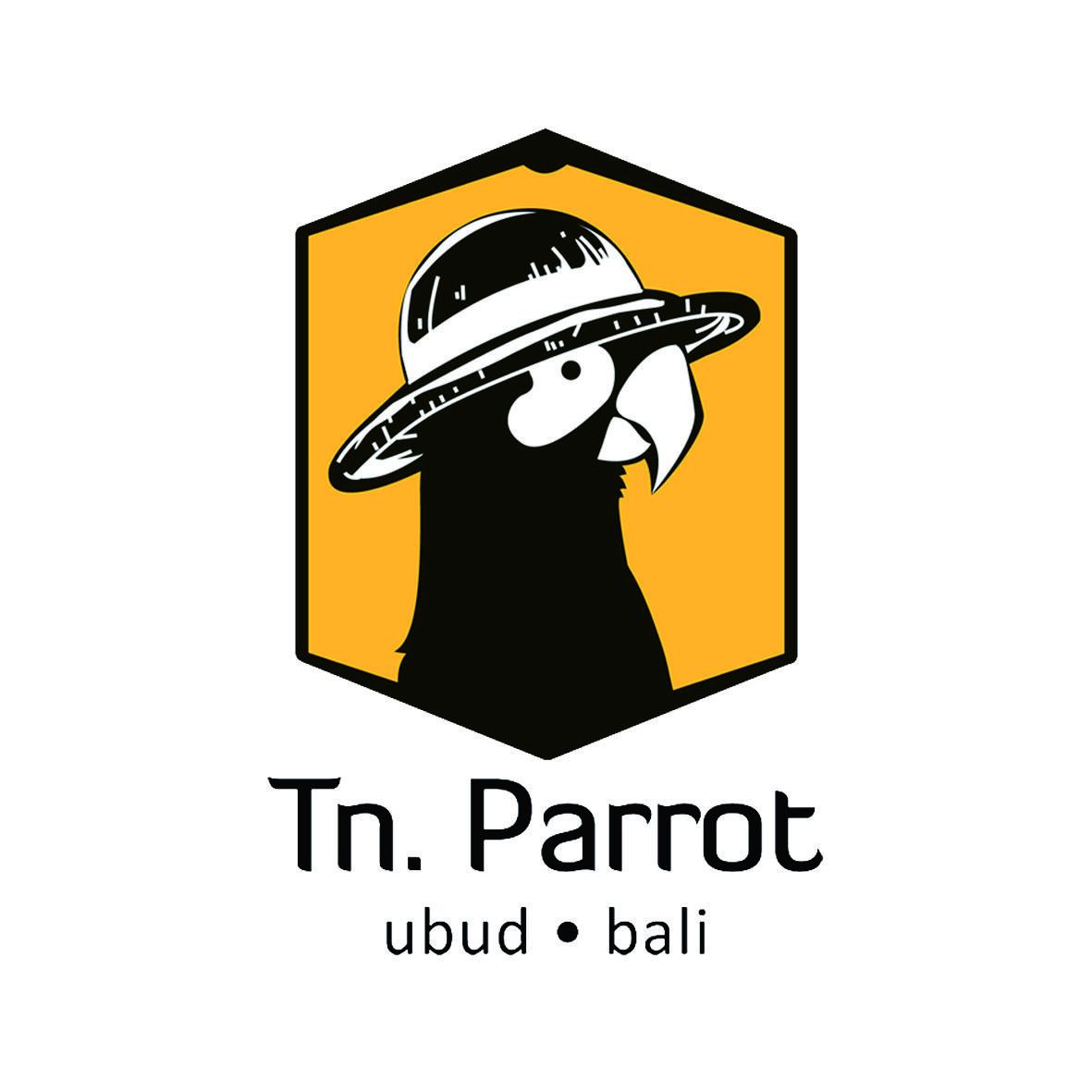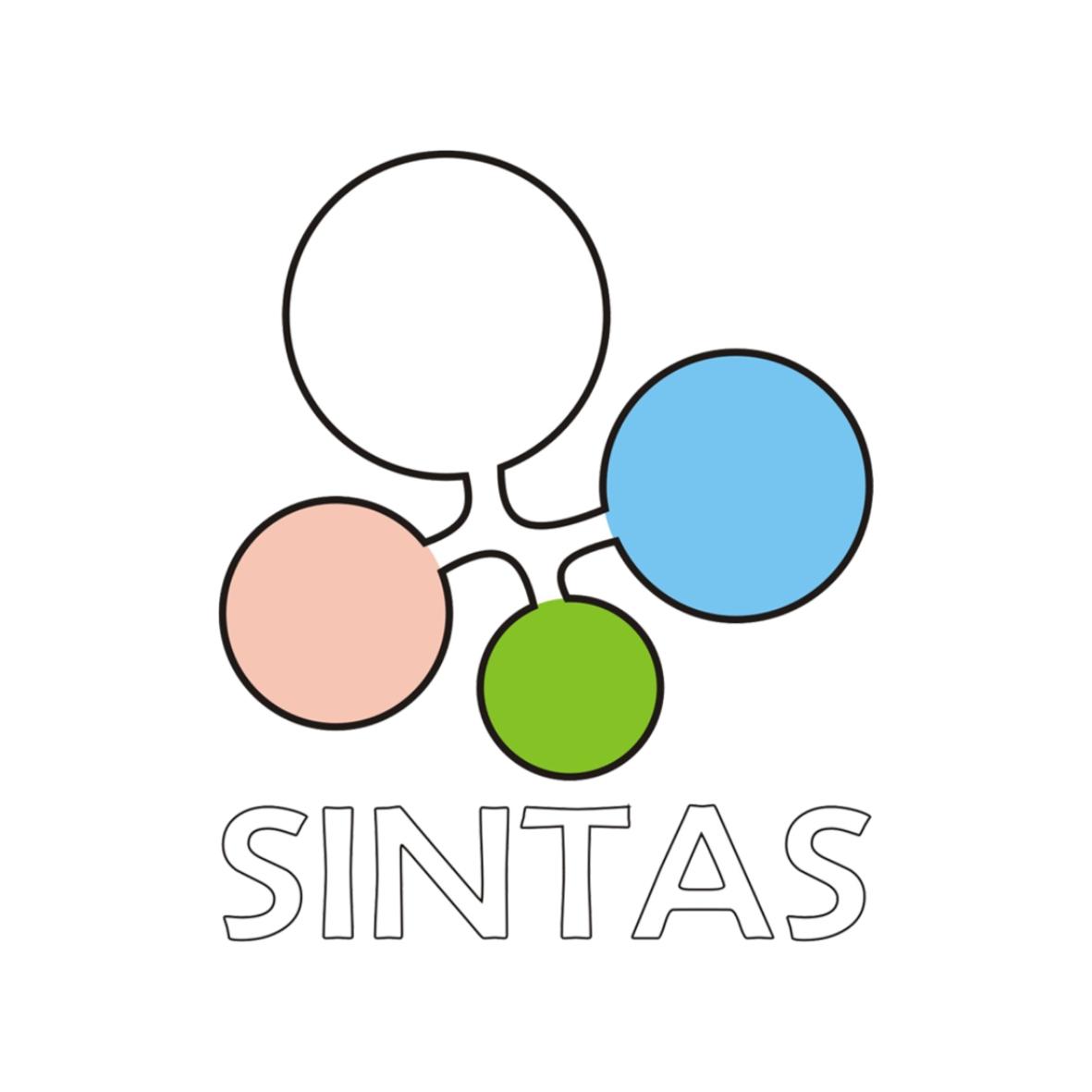PHOTO JOURNEY
Journey Photo is an idea planned and executed by Tn. Parrot and SINTAS Indonesia Foundation which aims to tell about SINTAS activities through a series of photos of activities in supporting the wildlife conservation efforts in Sumatra, especially the Sumatran Tigers. SINTAS Indonesia Foundation is an NGO (Non-Government Organization) that focuses on wildlife conservation, especially the protected wildcats.
FOTO JOURNEY
Journey Photo is an idea planned and executed by Tn. Parrot and SINTAS Indonesia
Foundation which aims to tell about SINTAS activities through a series of photos of activities in supporting the wildlife conservation efforts in Sumatra, especially the Sumatran Tigers. SINTAS Indonesia Foundation is an NGO (Non-Government Organization) that focuses on wildlife conservation, especially the protected wildcats.
After going through a long process, SINTAS and Tn. Parrot agreed to start activities that will be carried out in Salareh Aia, Agam Regency, West Sumatra. We documented PAGARI Salareh Aia activities. PAGARI Salareh Aia is one of 7 PAGARI in West Sumatra. PAGARI is a Local Village’s Patrol community formed by the West Sumatra BKSDA together with the SINTAS Indonesian Foundation and the Centre for Orangutan Protection (COP).
After going through a long process, SINTAS and Tn. Parrot agreed to start activities that will be carried out in Salareh Aia, Agam Regency West Sumatra.
We documented PAGARI Salareh Aia activities. PAGARI Salareh Aia is one of 7 PAGARI in West Sumatra. PAGARI is a Local Village’s Patrol community formed by the West Sumatra BKSDA together with the SINTAS Indonesian Foundation and the Centre for Orangutan Protection (COP).
TN. PARROT x SINTAS INDONESIA
EXPLORE LIFE
SAVING THE LAST TIGERS IN INDONESIA
TN. PARROT x
SINTAS INDONESIA
EXPLORE LIFE
SAVING THE LAST TIGERS IN INDONESIA

Amirudin
Then Tn. Parrot looked for participants who would be sponsored to go to the field and document the activities.
A young man from eastern Indonesia, Labuan Bajo, named Amirudin managed to get the sponsor to go directly to West Sumatra. Amirudin is a young man who is active in supporting nature conservation in the Komodo National Park, with his excellent photography talent, Amirudin or who is often called Bang Amir, got this extraordinary opportunity. Before his departure, Amir was provided with basic knowledge about the activities and what he wanted to convey through the documentation he would take.

Amirudin
Then Tn. Parrot looked for participants who would be sponsored to go to the field and document the activities.
A young man from eastern Indonesia, Labuan Bajo, named Amirudin managed to get the sponsor to go directly to West Sumatra. Amirudin is a young man who is active in supporting nature conservation in the Komodo National Park, with his excellent photography talent, Amirudin or who is often called Bang Amir, got this extraordinary opportunity. Before his departure, Amir was provided with basic knowledge about the activities and what he wanted to convey through the documentation he would take.
The journey begins…
December 31, 2023 Amir departed from Labuan Bajo and Arrived at Jakarta to
meet Rian, Tn. Parrot Team Member who accompanied him in the field.
the journey begins…
December 31, 2023 Amir departed from Labuan Bajo and Arrived at Jakarta to meet Rian, Tn. Parrot Team Member who accompanied him in the field.


9 P.M. Western Indonesia Time, Rian and Amir arrived in Padang City. We immediately opened the first agenda by meeting with the SINTAS Team at the SINTAS Padang Office at 10 P.M. There, we also coordinated with the West Sumatra BKSDA representative.
This meeting discussed technical implementation before going to the field and Tn. Parrot received advice about the behaviors of tigers in the wild from the head of the Agam West Sumatra BKSDA Resort.
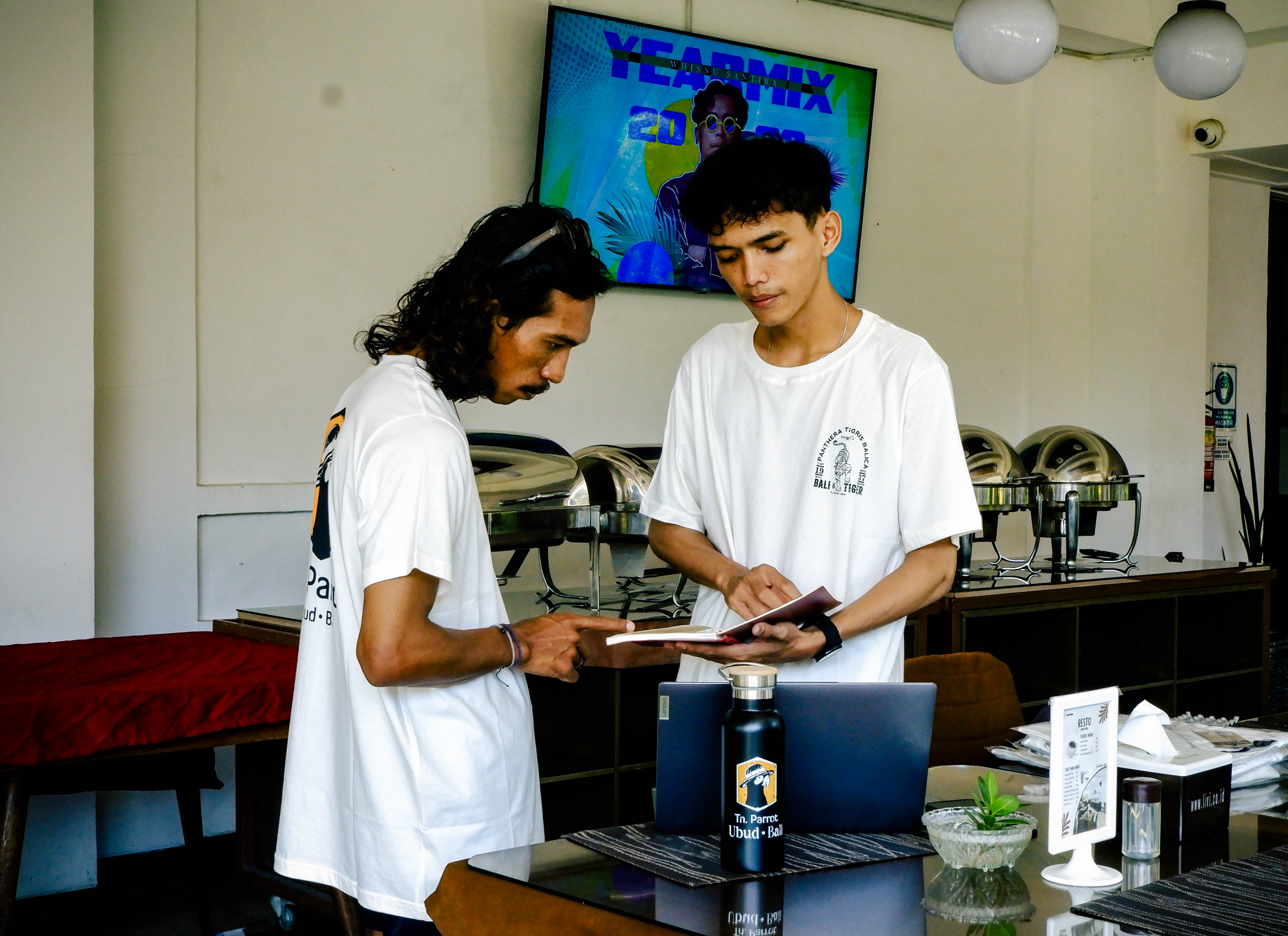
9 P.M. Western Indonesia Time, Rian and Amir arrived in Padang City. We immediately opened the first agenda by meeting with the SINTAS Team at the SINTAS Padang Office at 10 P.M. There, we also coordinated with the West Sumatra BKSDA representative.
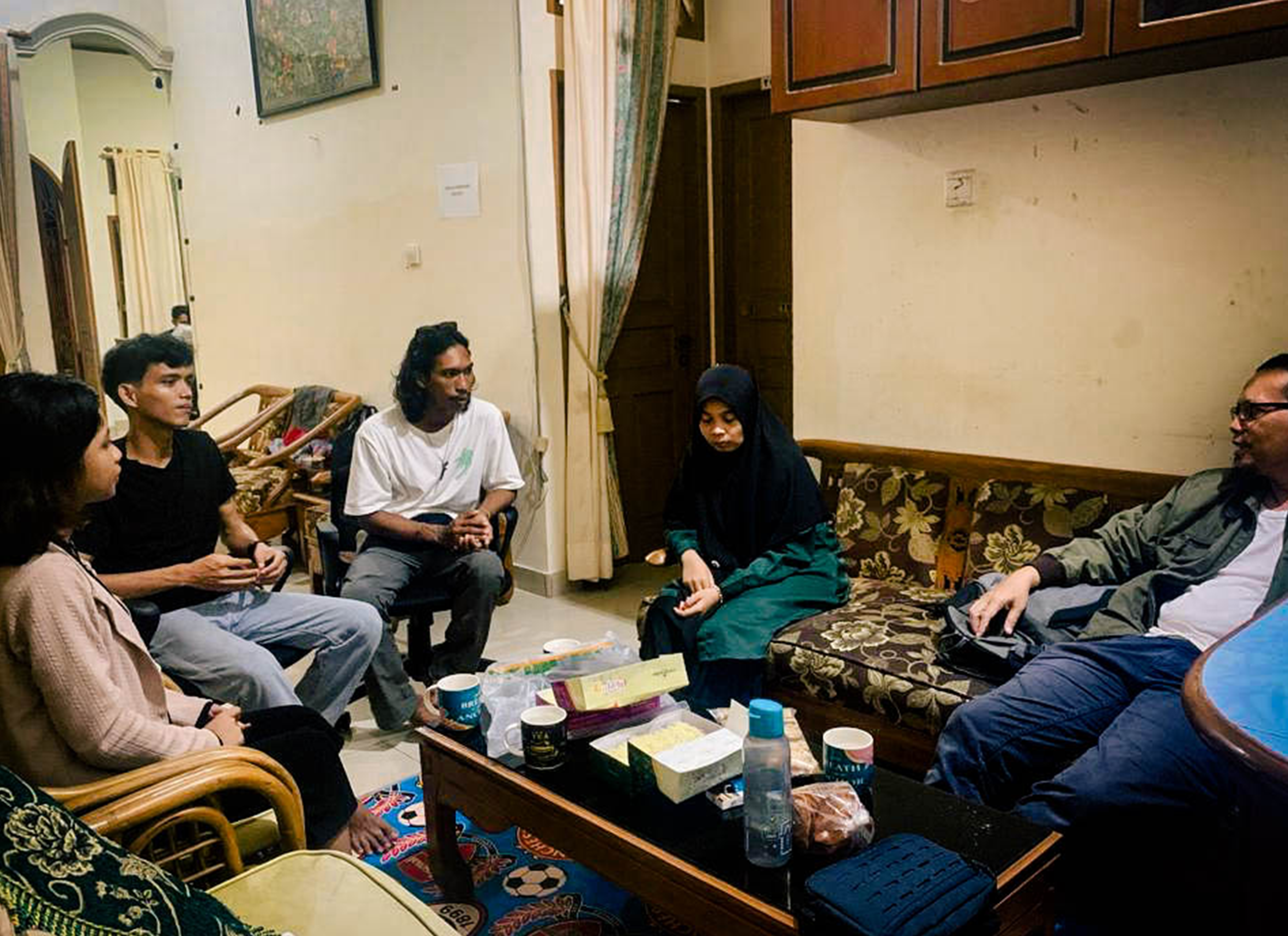
This meeting discussed technical implementation before going to the field and Mr. Parrot received advice about the behaviors of tigers in the wild from the head of the Agam West Sumatera BKSDA Resort.
TN. PARROT
X SINTAS
MAKING A DIFFERENCE
FOR PEOPLE AND PLANET
MAKING A DIFFERENCE
FOR PEOPLE AND PLANET
The next day, our agenda was to documenting Salareh Aia PAGARI patrol activities. The journey to the destination point [Salareh Aia Village] was a very challenging experience because the route is an unpaved road with the slippery ground due to heavy rain and prone to landslides. The car we were driving couldn’t pass the next route so we had move to the field car of West Sumatra BKSDA which was designed to conquer this extreme route to continue.
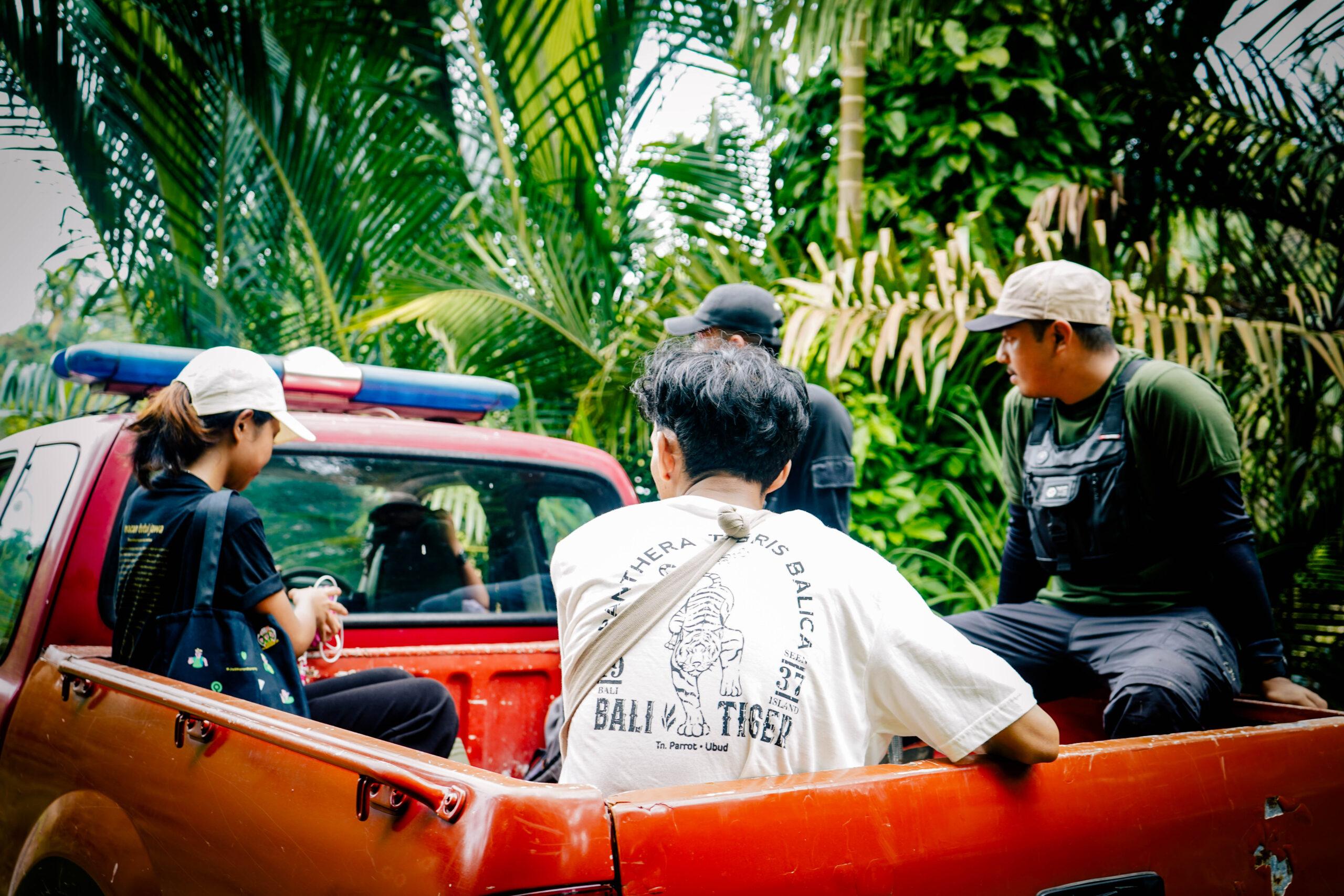

The next day, our agenda was to documenting Salareh Aia PAGARI patrol activities.
The journey to the destination point [Salareh Aia Village] was a very challenging experience because the route is an unpaved road with the slippery ground due to heavy rain and prone to landslides. The car we were driving couldn’t pass the next route so we had move to the field car of West Sumatra BKSDA which was designed to conquer this extreme route to continue.
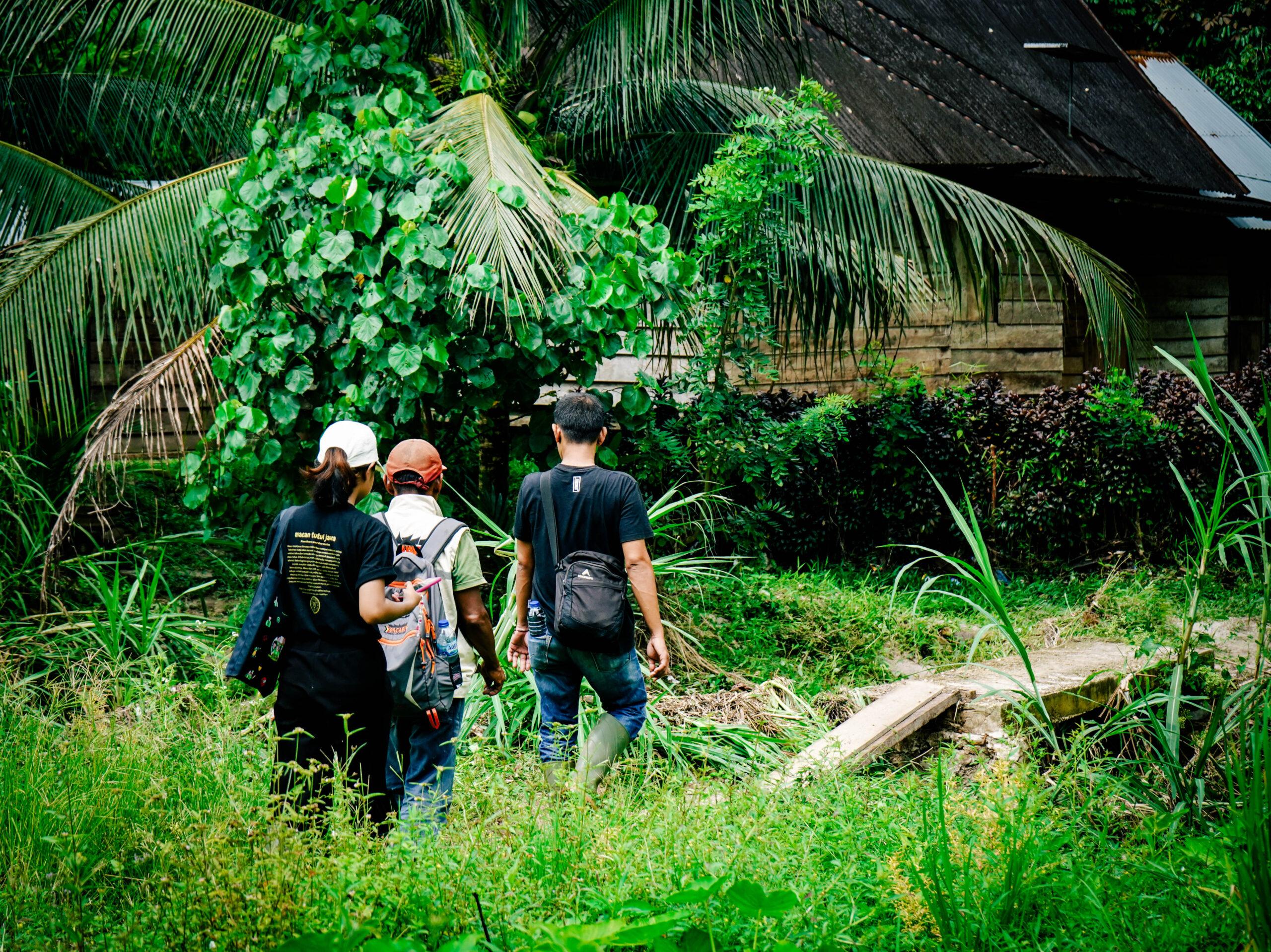
“When I saw the extreme route, I personally thought it would be impossible for us to reach our destination by car. Thanks to the strength and agility of our driver, we were able to pass this extreme route.” – Rian
At around 11.30 WIB we arrived at the location or post where we met all the PAGARI members. We were welcomed by the PAGARI team and introduced ourselves to each other and conveyed our aims and objectives.
.
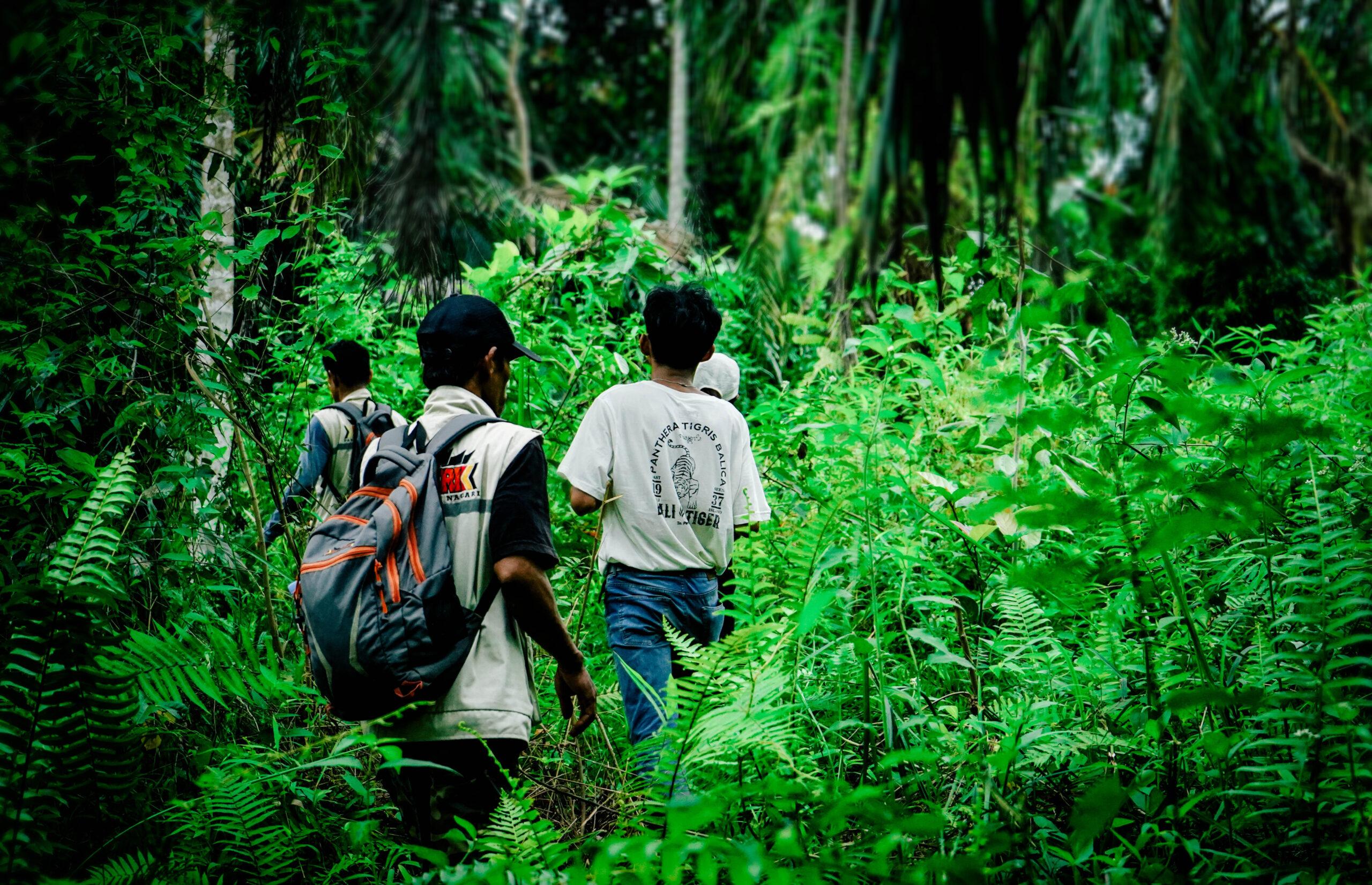
“When I saw the extreme route, I personally thought it would be impossible for us to reach our destination by car. Thanks to the strength and agility of our driver, we were able to pass this extreme route.” – Rian
At around 11.30 WIB we arrived at the location or post where we met all the PAGARI members. We were welcomed by the PAGARI team and introduced ourselves to each other and conveyed our aims and objectives.

After chatting, we had lunch and briefing time with PAGARI, SINTAS, and West Sumatra BKSDA. We were informed that PAGARI’s patrol is PAGARI’s routine activities which are carried out by walking along the village border area and the Maninjau protected area to see signs of Sumatran Tiger tracks. Traces observed include: footprints, scratches, feces, and so on. PAGARI also checked the condition of surveillance cameras installed at certain points where tigers had been caught crossing.

After chatting, we had lunch and briefing time with PAGARI, SINTAS, and West Sumatra BKSDA.
We were informed that PAGARI’s patrol is PAGARI’s routine activities which are carried out by walking along the village border area and the Maninjau protected area to see signs of Sumatran Tiger tracks. Traces observed include: footprints, scratches, feces, and so on. PAGARI also checked the condition of surveillance cameras installed at certain points where tigers had been caught crossing.

Were guided by the PAGARI team to follow the patrol. The weather when we left was quite cloudy and of course we brought raincoats just in case the rain came.
On our way, we passed through rice fields and river flows. When we arrived at the rice fields which were still empty, we did not find any signs or traces of a tiger.

After passing through the rice fields, we had to go up to climb a few meters. When we got to the top, we saw lots of trees that had fallen and had been deliberately cut down.
In my heart it occurred to me, “this conflict occurred not because the tigers entered their land, but because they took over the tiger’s habitat” is just an assumption.

Were guided by the PAGARI team to follow the patrol.
The weather when we left was quite cloudy and of course we brought raincoats just in case the rain came. On our way, we passed through rice fields and river flows. When we arrived at the rice fields which were still empty, we did not find any signs or traces of a tiger.

After passing through the rice fields, we had to go up to climb a few meters.
When we got to the top, we saw lots of trees that had fallen and had been deliberately cut down. In my heart it occurred to me, “this conflict occurred not because the tigers entered their land, but because they took over the tiger’s habitat” is just an assumption.
SURVEILLANCE CAMERA TRAIL
After few minutes of walking, we arrived at the first camera trap point. PAGARI team checked and replaced the camera trap battery. At this first point we still found nothing of Sumatran Tigers traces. Next, go to the second camera point. The location is right on the edge of the forest.


SURVEILLANCE CAMERA TRAIL
After few minutes of walking, we arrived at the first camera trap point.
PAGARI team checked and replaced the camera trap battery. At this first point we still found nothing of Sumatran Tigers traces. Next, go to the second camera point. The location is right on the edge of the forest.
On the way, we descended the valley and were hit by heavy rain there. We immediately put on our raincoats and once everything was ready, we immediately continued our journey.

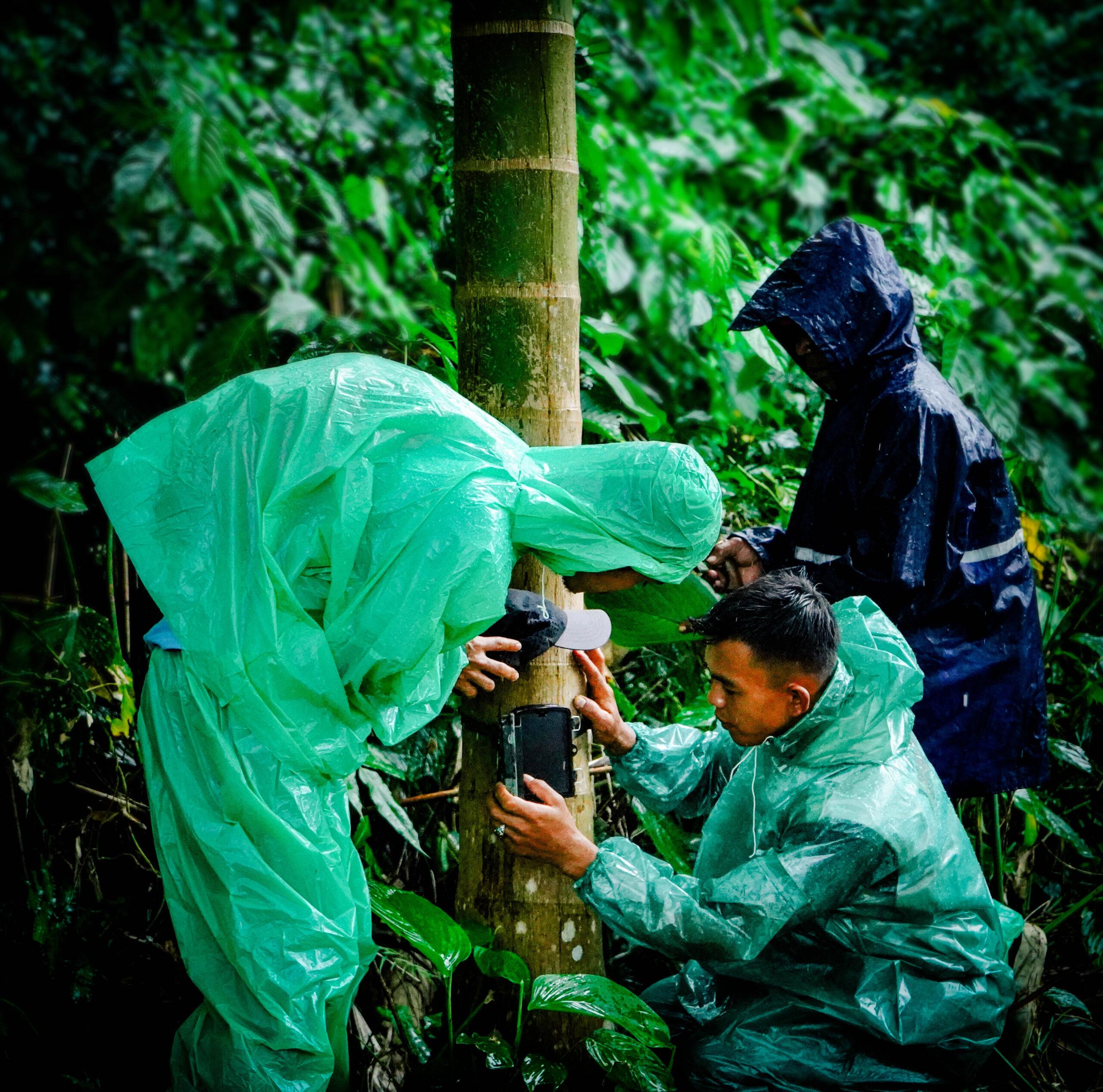
On the way, we descended the valley and were hit by heavy rain there.
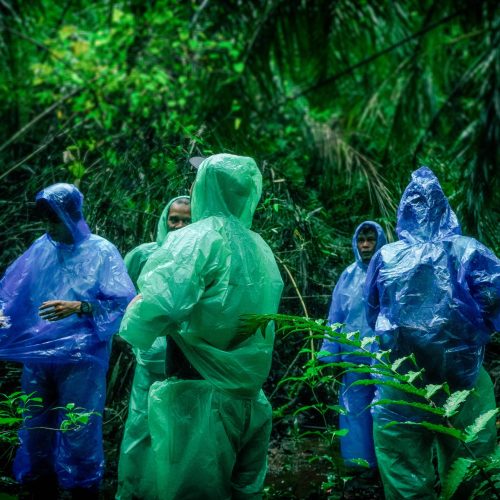
We immediately put on our raincoats and once everything was ready, we immediately continued our journey.


Arrived at the second location, we rested under a jengkol tree while checking the surveillance camera.

This camera captured images of the local monkeys.
After checking and reinstalling the camera, we discussed whether to continue the journey to the communal enclosure or continue on the next day and we all agreed to complete the activity right then and there.


Arrived at the second location, we rested under a jengkol tree while checking the surveillance camera. This camera captured images of the local monkeys.
After checking and reinstalling the camera, we discussed whether to continue the journey to the communal enclosure or continue on the next day and we all agreed to complete the activity right then and there.
We didn’t go back along the same route, but we were directed and guided by the PAGARI team to take the route along the river, the habitat of crocodiles in Salareh Aia.


We didn’t go back along the same route, but we were directed and guided by the PAGARI team to take the route along the river, the habitat of crocodiles in Salareh Aia.
PHOTO JOURNEY



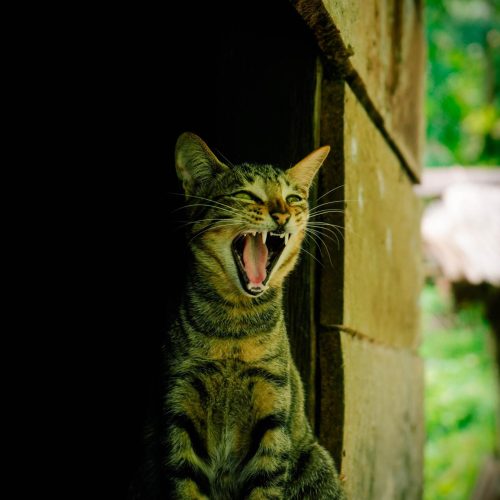

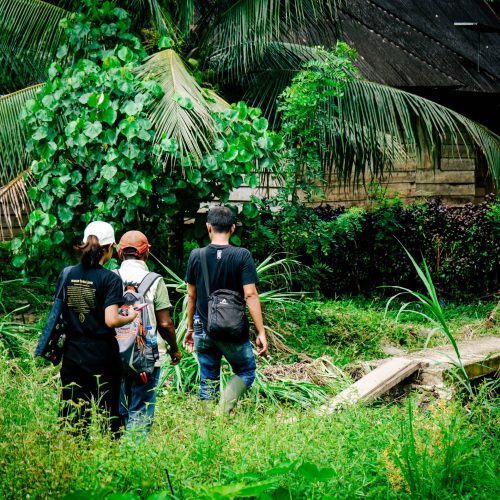
PHOTO JOURNEY




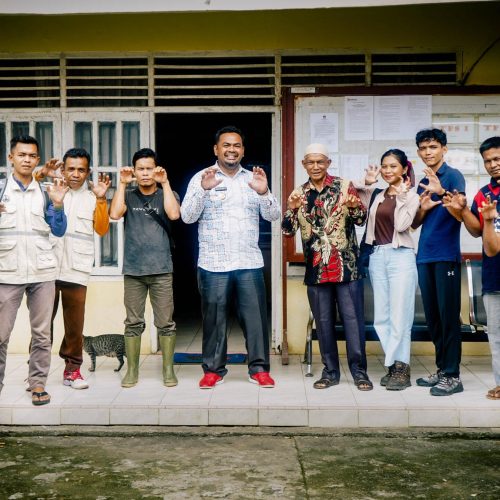

EXPLORE LIFE
One day can change a life, one life can change
The world with you Explore Life | Explore Bali.
EXPLORE LIFE
One day can change a life, one life can change
The world with you Explore Life | Explore Bali.
To get to the river we had to go down the hill on a path that was slippery because of the rain. We walked together downhill until we arrived at a lubuak buayo where the river stopped at a bend and formed a circular path but looked still. Usually, residents often see crocodiles at this location.
To get to the river we had to go down the hill on a path that was slippery because of the rain.
We walked together downhill until we arrived at a lubuak buayo where the river stopped at a bend and formed a circular path but looked still. Usually, residents often see crocodiles at this location.
In West Sumatra, people familiarly call Inyiak a prominent and/or respected figure in a tribe, usually referring to such as the headman, traditional head, or government official.
However, currently SINTAS Indonesia and BKSDA West Java are planning a biogas production project as a solution to this problem. Once we had our fill of the communal pens, we headed back to basecamp. Arriving at basecamp we continued our journey to the nearest town to rest. The closest city to Lubuk Basung. The trip to Lubuk Basung from basecamp is approximately 2 hours. We decided to take a break in the city of Lubuak Basung waiting for tomorrow’s agenda to meet with the Mayor of Salareh Aia Village.
Unfortunately, we didn’t see any Inyiak back then. It was still raining and we decided head back to basecamp by following the river flow. Along the river, a lot of land has been cut or has experienced abrasion due to quite heavy rainfall.
In West Sumatera, people familiarly call Inyiak
a prominent and/or respected figure in a tribe, usually referring to such as the headman, traditional head, or government official. However, the Minangkabau people also call the Sumatran tiger Inyiak balang. The figure of the Sumatran tiger is depicted as an authoritative leader. Beside sumatran tiger, crocodiles also called as Inyiak by the Salareh Aia residents.
Unfortunately, we didn’t see any Inyiak back then.
It was still raining and we decided head back to basecamp by following the river flow. Along the river, a lot of land has been cut or has experienced abrasion due to quite heavy rainfall.
COMMUNAL ENCLOSURE
Communal enclosure/pens are livestock pens that can be used to house the livestock of a community.
People in West Sumatra, especially those living in villages, generally have livestock such as cows, buffalo, chickens and/or goats. Usually, livestock are simply released in the yard/plantation to find their own food in nature and the owner brings them into the pen every afternoon.


However, in villages where part of the area is the habitat of wildlife such as Sumatran tigers, private pens often receive attacks so that communal pens with large sizes and high, sturdy fences are more effective in protecting livestock from attacks by wildlife.
For your information, the Sumatran tiger is a nocturnal animal, it actively looks for food from dusk until dawn, so that is why livestock need to be put in cages at that time, so that they are not hunted by Sumatran tigers whose natural food is meat [carnivores].
COMMUNAL ENCLOSURE
Communal enclosure/pens are livestock pens that can be used to house the livestock of a community.
People in West Sumatra, especially those living in villages, generally have livestock such as cows, buffalo, chickens and/or goats. Usually, livestock are simply released in the yard/plantation to find their own food in nature and the owner brings them into the pen every afternoon.



However, in villages where part of the area is the habitat of wildlife such as Sumatran tigers
private pens often receive attacks so that communal pens with large sizes and high, sturdy fences are more effective in protecting livestock from attacks by wildlife.
For your information, the Sumatran tiger is a nocturnal animal, it actively looks for food from dusk until dawn, so that is why livestock need to be put in cages at that time, so that they are not hunted by Sumatran tigers whose natural food is meat [carnivores].

In West Sumatra, so far there is only one communal pen that built and proven effective, which is located in Salareh Aia Village. Back from patrol, we rested for a while and enjoying coffee served by the wives of PAGARI Members at the Basecamp. After getting enough rest, we continued our journey to the Salareh Aia communal enclosure.

In West Sumatra, so far there is only one communal pen that built and proven effective, which is located in Salareh Aia Village.
Back from patrol, we rested for a while and enjoying coffee served by the wives of PAGARI Members at the Basecamp. After getting enough rest, we continued our journey to the Salareh Aia communal enclosure.
Travel to the communal enclosure was about 3 km from basecamp. On the way there I saw expanses of hills that had been denuded and replaced with several oil palm plantations.
Passing through bare hills, we entered an oil palm plantation that was approximately 7 years old and we had to cross a tributary river. It was already afternoon so the PAGARI members and one of the wives were herding livestock which had been released in the morning on the edge of the forest to return to the communal pen for rest. After the cows came in, we continued to tell stories in the communal pen area.
Even though communal pen is a solution for a problem, there are also further problems that arise from communal pen existence. One of the PAGARI members complained about people’s awareness of leaving their cows in communal pens. Many of them don’t even care about cleaning up their own cow dung.
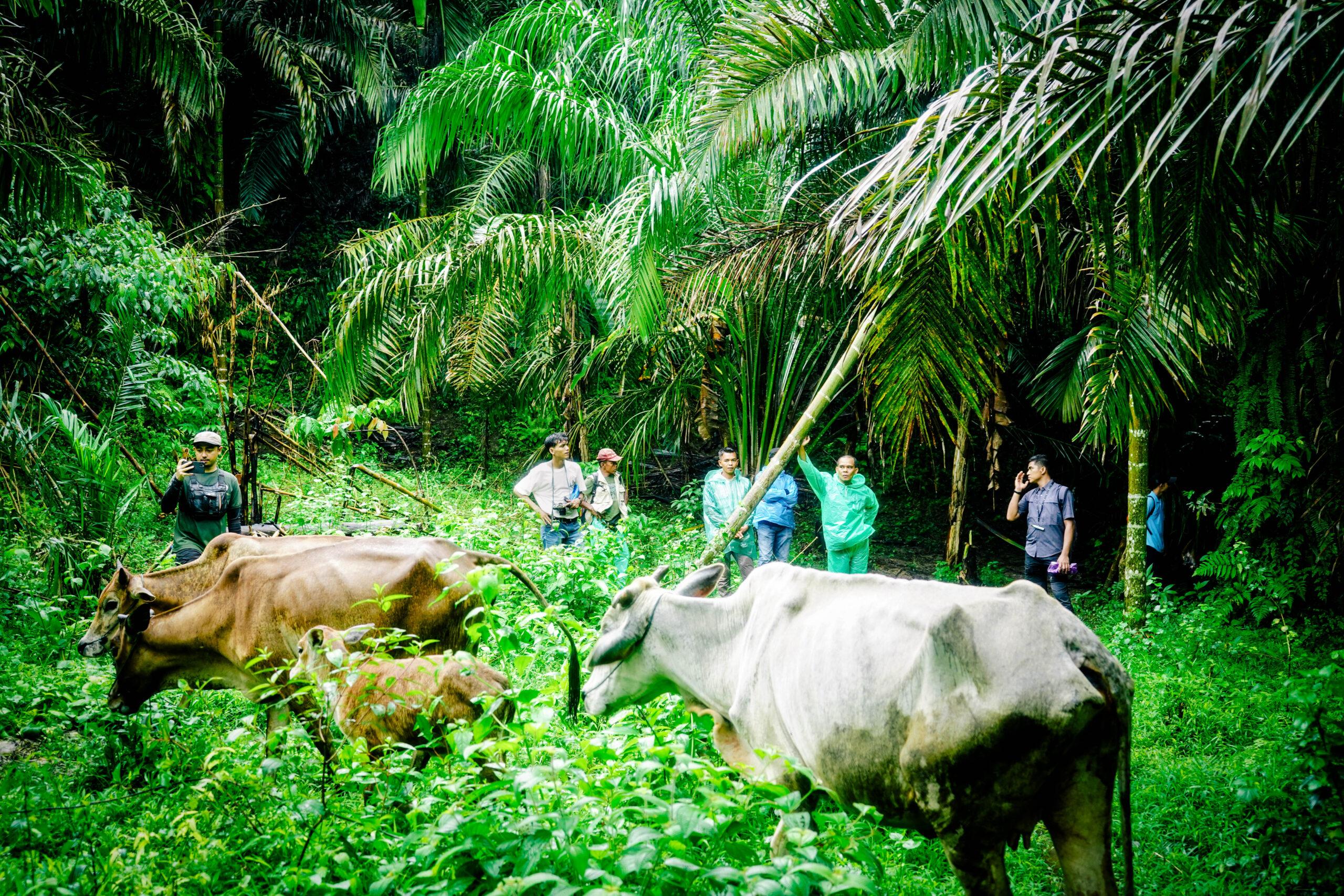
The capacity of the communal pen feels exceeded, so rehabilitation or increasing the size of the cage is needed. As a result of the excess capacity, the PAGARI Salareh Aia team members experienced problems with managing cow dung which was increasingly piling up.
However, currently SINTAS Indonesia and BKSDA West Java are planning a biogas production project as a solution to this problem. Once we had our fill of the communal pens, we headed back to basecamp. Arriving at basecamp we continued our journey to the nearest town to rest. The closest city to Lubuk Basung. The trip to Lubuk Basung from basecamp is approximately 2 hours. We decided to take a break in the city of Lubuak Basung waiting for tomorrow’s agenda to meet with the Mayor of Salareh Aia Village.
Travel to the communal enclosure was about 3 km from basecamp. On the way there I saw expanses of hills that had been denuded and replaced with several oil palm plantations.
Passing through bare hills, we entered an oil palm plantation that was approximately 7 years old and we had to cross a tributary river.
It was already afternoon so the PAGARI members and one of the wives were herding livestock which had been released in the morning on the edge of the forest to return to the communal pen for rest. After the cows came in, we continued to tell stories in the communal pen area.

Even though communal pen is a solution for a problem, there are also further problems that arise from communal pen existence.
One of the PAGARI members complained about people’s awareness of leaving their cows in communal pens. Many of them don’t even care about cleaning up their own cow dung.
The capacity of the communal pen feels exceeded, so rehabilitation or increasing the size of the cage is needed. As a result of the excess capacity, the PAGARI Salareh Aia team members experienced problems with managing cow dung which was increasingly piling up.
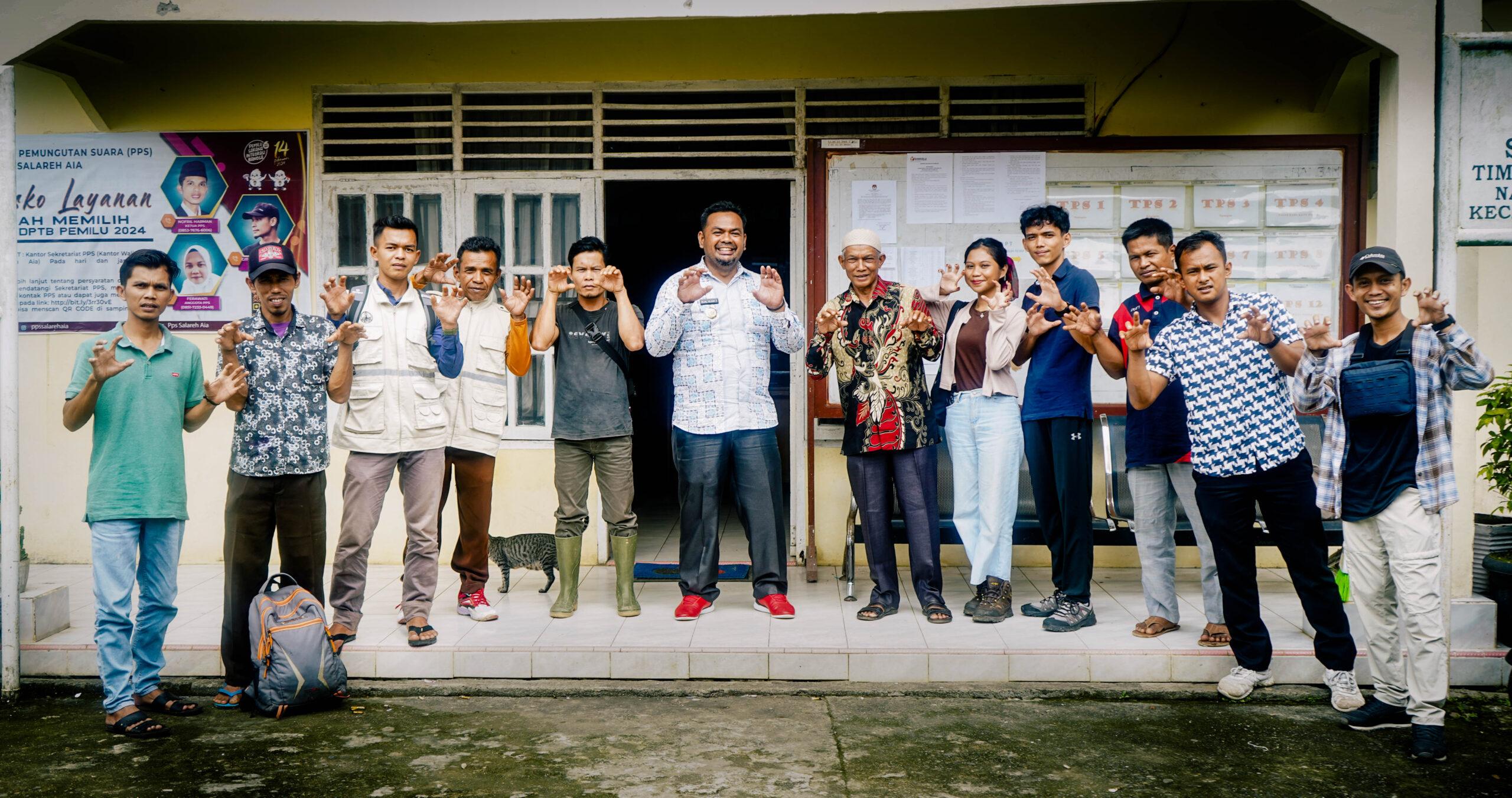
Early in the morning we had plans to meet with the Mayor at 9 A.M WIB. We waited at a stall next to the Village mayor’s office.
After everyone had gathered, Tn. Parrot, SINTAS, and the PAGARI Team were invited to enter the Mayor’s room. In this room, the PAGARI Team conveyed and discussed all their problems with the government, mediated by SINTAS Team.
After everyone negotiated and agreed to correct their communication errors, we immediately held a group photo session complete with members of PAGARI, SINTAS, and Tn. Parrot as the closing of the trip in Salareh Aia.

However, SINTAS Indonesia and West Sumatra BKSDA was currently disscussing future plans to overcome this problem.
Once we had our fill of the communal pens, we headed back to basecamp. Arriving at basecamp we continued our journey to the nearest town to rest. The closest city to Lubuk Basung. The trip to Lubuk Basung from basecamp is approximately 2 hours. We decided to take a break in the city of Lubuak Basung waiting for tomorrow’s agenda to meet with the Mayor of Salareh Aia Village.
Early in the morning we had plans to meet with the Mayor at 9 A.M WIB. We waited at a stall next to the Village mayor’s office.
After everyone had gathered, Mr. Parrot, SINTAS, and the PAGARI Team were invited to enter the Mayor’s room. In this room, the PAGARI Team conveyed and discussed all their problems with the government, mediated by SINTAS Team.
After everyone negotiated and agreed to correct their communication errors, we immediately held a group photo session complete with members of PAGARI, SINTAS, and TN. Parrot as the closing of the trip in Salareh Aia.
COLLABORATION
The activity is supported by:
Tn. Parrot as the providing funding
SINTAS as the on-field guide (Sumatra)
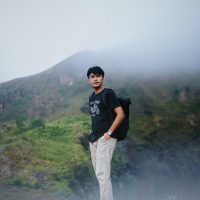
TN. PARROT
TN. PARROT
Pertama kalinya saya jauh melangkah dari tanah timur ke tanah barat untuk melakukan kegiatan foto journey ,saya tidak menyangka saya akan melangkah sejauh ini dan mendapatkan pengalaman yang sangat berharga ini.

SINTAS
SINTAS
Pertama kalinya saya jauh melangkah dari tanah timur ke tanah barat untuk melakukan kegiatan foto journey ,saya tidak menyangka saya akan melangkah sejauh ini dan mendapatkan pengalaman yang sangat berharga ini.

PAGARI
PAGARI
Pertama kalinya saya jauh melangkah dari tanah timur ke tanah barat untuk melakukan kegiatan foto journey ,saya tidak menyangka saya akan melangkah sejauh ini dan mendapatkan pengalaman yang sangat berharga ini.
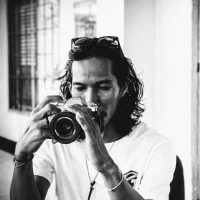
PHOTOGRAPHER
PHOTOGRAPHER
“For the first time, I ventured far from the east to the west to embark on a photo journey. I never expected to travel this far and gain such valuable experience.”
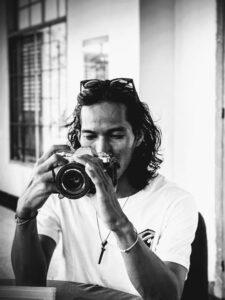
AMIRUDIN
PHOTOGRAPHER
For the first time, I ventured far from the East to the West for a photo journey, I never imagined I would go this far and gain such valuable experience.
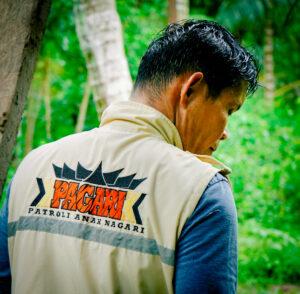
Rano
PAGARI
We as the general public appreciate being led by experienced individuals in the field of conservation, which makes us more aware of the importance of preserving the environment and coexisting with its wildlife.
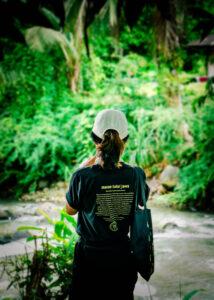
Shania
SINTAS INDONESIA
Conservation awareness and education is an exciting and fulfilling job for me personally. I am glad every time I have the opportunity to accompany more people to get to know the world of conservation. Seeing Tn. Parrot's team fly all the way from eastern Indonesia to support the Sumatran tiger conservation awareness effort amazed me. I hope that through this collaboration, there will be more parties who will support and participate in wildlife conservation efforts in Indonesia.
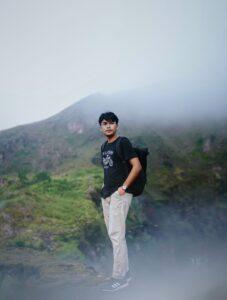
Putra Birawan
TN. PARROT
PHOTO JOURNEY is my first step into delving into the world of conservation. Though this marks a beginning, I believe it's not the end of my journey. I hope that future generations, including my grandchildren, will come to know and still be able to witness Indonesia's 'king of the jungle,' the Sumatran tiger, which we must preserve. My wish is simple: I do not want to see them extinct.
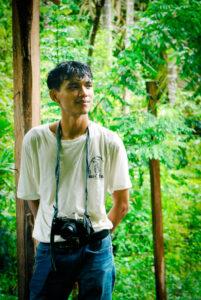
Rian
STUDENT OF COMMUNICATION
The extraordinary opportunity to contribute to this project has given me new experiences in conflict mitigation. It turns out that it's not easy to maintain the sustainability of nature and its wildlife, as it requires balancing the economic sustainability of communities living alongside nature.
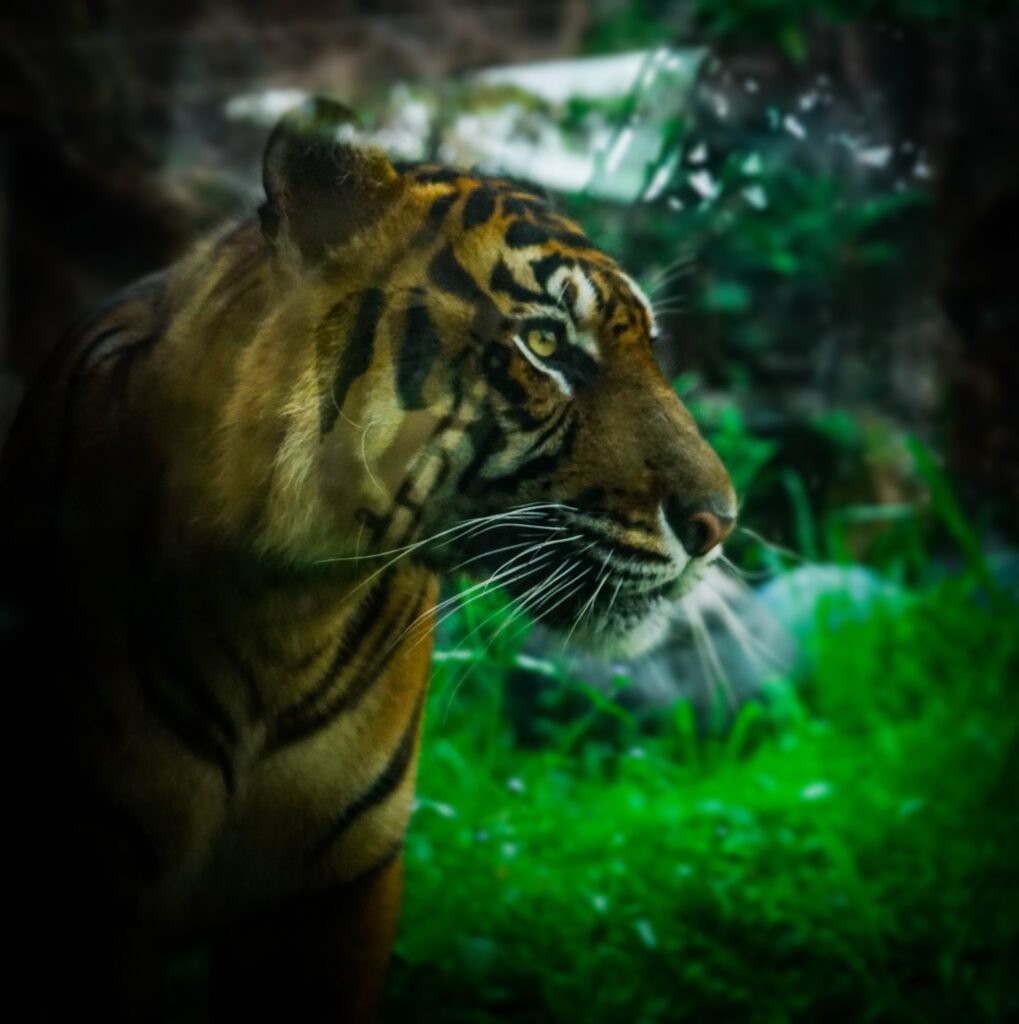
“Their voices may not be heard, but their protection is crucial. Together, let’s ensure that wildlife continues to thrive in the Sumatran wilderness. With your invaluable help, we can make a real difference.”
Donation is intended for

AMIRUDIN
PHOTOGRAPHER
For the first time, I ventured far from the East to the West for a photo journey, I never imagined I would go this far and gain such valuable experience.

Rano
PAGARI
We as the general public appreciate being led by experienced individuals in the field of conservation, which makes us more aware of the importance of preserving the environment and coexisting with its wildlife.

Shania
SINTAS INDONESIA
Conservation awareness and education is an exciting and fulfilling job for me personally. I am glad every time I have the opportunity to accompany more people to get to know the world of conservation. Seeing Tn. Parrot's team fly all the way from eastern Indonesia to support the Sumatran tiger conservation awareness effort amazed me. I hope that through this collaboration, there will be more parties who will support and participate in wildlife conservation efforts in Indonesia.

Putra Birawan
TN. PARROT
PHOTO JOURNEY is my first step into delving into the world of conservation. Though this marks a beginning, I believe it's not the end of my journey. I hope that future generations, including my grandchildren, will come to know and still be able to witness Indonesia's 'king of the jungle,' the Sumatran tiger, which we must preserve. My wish is simple: I do not want to see them extinct.

Rian Satria
STUDENT OF COMMUNICATION
The extraordinary opportunity to contribute to this project has given me new experiences in conflict mitigation. It turns out that it's not easy to maintain the sustainability of nature and its wildlife, as it requires balancing the economic sustainability of communities living alongside nature.

“Their voices may not be heard, but their protection is crucial. Together, let’s ensure that wildlife continues to thrive in the Sumatran wilderness. With your invaluable help, we can make a real difference.”
Donation is intended for

